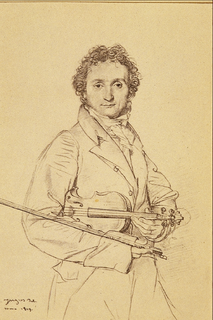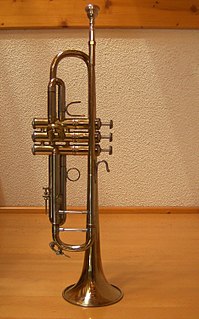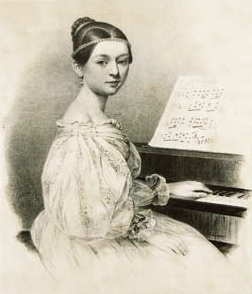Related Research Articles

Christian Lindberg is a Swedish trombonist, conductor and composer,

Julius Klengel was a German cellist who is most famous for his études and solo pieces written for the instrument. He was the brother of Paul Klengel. A member of the Gewandhaus Orchestra of Leipzig at fifteen, he toured extensively throughout Europe as cellist and soloist of the Gewandhaus Quartet. His pupils include Guilhermina Suggia, Emanuel Feuermann, Gregor Piatigorsky and Alexandre Barjansky. See: List of music students by teacher: K to M#Julius Klengel.
Édouard Lalo wrote his Cello Concerto in D minor in 1876, in collaboration with the Belgian cellist Adolphe Fischer (1847-1891). The work was premièred the following year at the Cirque d'Hiver with Fischer as soloist.
Václav Nelhýbel was a Czech American composer, mainly of works for student performers.
Karl Traugott Queisser played trombone and viola in Germany as a member of the Gewandhaus Orchestra under Felix Mendelssohn.

Ferdinand Ernst Victor Carl David was a German virtuoso violinist and composer.
Motorbike Odyssey is the Trombone Concerto No. 1 by Swedish composer Jan Sandström. The concerto for solo tenor trombone and large orchestra, written in 1989, is sometimes called Motorbike Concerto. It was dedicated to the trombone virtuoso Christian Lindberg. The piece is meant to be a musical telling of a modern Odysseus, traveling the world with his trombone.

The Violin Concerto No. 1, Op. 6, was composed by Niccolò Paganini in Italy, probably between 1817 and 1818. It was premiered in Naples on 31 March 1819.
Aram Khachaturian's Piano Concerto in D-flat major, Op. 38, was composed in 1936. It was his first work to bring him recognition in the West, and it immediately entered the repertoire of many notable pianists.
Frédéric Chopin's Allegro de concert, Op. 46, is a piece for piano, published in November 1841. It is in one movement and takes between 11 and 15 minutes to play. The principal themes are bold and expressive. It has a curious place in the Chopin canon, and while its history is obscure, the evidence supports the view, shared by Robert Schumann and others, that it started out as the first movement of a projected third piano concerto, of which the orchestral parts are either now non-existent or were never scored at all. There is no evidence that Chopin ever even started work on the latter movements of this concerto.

The trumpet repertoire consists of solo literature and orchestral or, more commonly, band parts written for the trumpet. Tracings its origins to 1500 BC, the trumpet is a musical instrument with the highest register in the brass family.
Concerto for Trombone is a 1942 instrumental crossover work in three movements, which trombonist Tommy Dorsey, one of the best known musical entertainment stars of his time, commissioned from Nathaniel Shilkret, a noted conductor and composer of music for recording, radio and film.
The Concerto per Trombone e Orchestra in C was composed by Italian composer Nino Rota in 1966. The concerto is in three movements:
- Allegro giusto
- Lento, ben ritmato
- Allegro moderato
Concerto for Trombone and Orchestra was written in 1924 by Danish composer Launy Grøndahl during his time in Italy. It was inspired by the trombone section of the Orchestra of the Casino Theatre in Copenhagen. This work was premiered in Copenhagen by the Orchestra of the Casino Theatre with soloist Vilhelm Aarkrogh, the principal trombonist of the orchestra. The work has been recorded by Joseph Alessi, Brett Baker, Håkan Björkman, Jesper Juul Sørensen, Massimo La Rosa, Christian Lindberg, Jacques Mauger, and Branimir Slokar, among others.

The Piano Concerto in C minor is one of the early compositions by the English composer Frederick Delius. The piece underwent repeated revisions that resulted in the existence of three major versions which significantly differ from one another. The first public performance of any version was played by Julius Buths with the conductor Hans Haym on 24 October 1904 in Elberfeld, Germany.
Troorkh is a composition for trombone and orchestra by Greek composer Iannis Xenakis. It was commissioned by Swedish Radio for Swedish trombonist Christian Lindberg, to whom it is dedicated, and was completed in 1991. It was premiered on March 26, 1993 at Berwald Hall in Stockholm by the Swedish Radio Orchestra under Esa-Pekka Salonen, with Lindberg as the soloist.
The Concerto for Orchestra is a four-movement concerto for orchestra written in 1969 by the American composer Elliott Carter. The work was commissioned by the New York Philharmonic to commemorate their 125th anniversary and was premiered by the orchestra under the conductor Leonard Bernstein in the Philharmonic Hall, New York City, on February 5, 1970.

The Piano Concerto in A minor, Op. 7, was composed by Clara Wieck, better known as Clara Schumann after her later marriage to Robert Schumann. She completed her only finished piano concerto in 1835, and played it first that year with the Leipzig Gewandhaus Orchestra, conducted by Felix Mendelssohn.
The Concerto for Bassoon and Orchestra is a bassoon concerto written by the American composer Ellen Taaffe Zwilich. The work was commissioned by the Pittsburgh Symphony Orchestra for their principal bassoonist Nancy Goeres. It was given its world premiere by Goeres and the Pittsburgh Symphony Orchestra under the direction of Lorin Maazel in Heinz Hall for the Performing Arts, Pittsburgh, on May 13, 1993. The piece is dedicated to Maazel, Goeres, and the Pittsburgh Symphony Orchestra.
References
- 1 2 Lindberg, Christian: "History of the Concertino"
- ↑ Introduction to David's Trombone Concerto
- ↑ "Discography of Classical Trombone CDs" . Retrieved 2017-11-14.